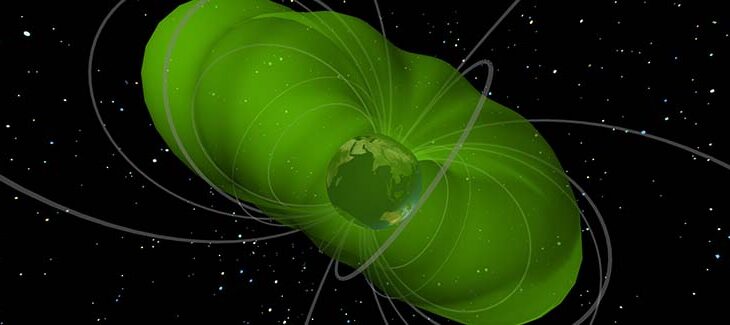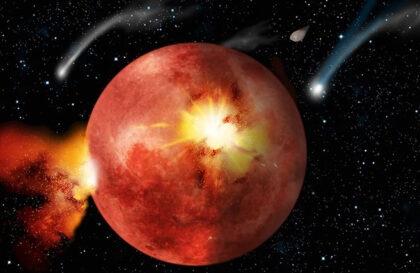Scientists have recorded fluctuations in the Earth’s magnetosphere that shouldn’t have happened.
An international team of astronomers has published a study that describes a previously unknown mechanism of interaction between the Earth and the Moon. It turns out that the Moon has hidden tidal gravitational forces that attract our planet’s magnetosphere.
The study was published in the journal Nature Physics.
Scientists used data collected by various satellites over more than 40 years of observations to study minute changes in the shape of the plasmasphere and the inner region of the Earth’s magnetosphere. As a result of analyzing a large amount of data, they discovered unexpected fluctuations in the Earth’s magnetosphere, which are associated with the influence of the Moon.
The underlying mechanism for this effect is likely to be the Moon’s powerful gravitational tidal forces, which pull on Earth’s magnetosphere, much as the Moon influences the tides of ocean waters.
The plasmasphere is like a “plasma sea” located on top of the Earth’s magnetic field lines above the ionosphere, the upper electrically charged layer of the atmosphere. In this region, the ionized gas (plasma) is denser than in the outer parts of the magnetosphere, which causes it to “sink to the bottom” of the magnetosphere. The boundary between this dense plasma and the rest of the magnetosphere is called the plasmapause.
A view of the plasmasphere above the north geographic pole. Credit:NASA/Goddard Space Flight Center Scientific Visualization Studio
Just as the ocean has its surface, the plasmasphere can be considered a “plasma ocean,” and the plasmapause is its “surface.” Interestingly, the Moon’s gravitational influence can distort this “plasma ocean,” causing its surface to rise and fall, similar to the ebb and flow of the ocean.
Let us recall that scientists studied data collected by satellites from 1977 to 2015, during which four complete solar cycles occurred. This is important because the researchers considered the Sun’s influence on the “plasma ocean.” The analysis showed that fluctuations in the shape of the plasmapause followed specific daily and monthly patterns very similar to ocean tides. And the probable cause of plasma tides was recognized as the influence of the Moon, not the Sun.
However, researchers still need to establish how the Moon causes plasma tides.
Banner image: An equatorial view of the plasmasphere. Credit: NASA/Goddard Space Flight Center Scientific Visualization Studio
Image credit:
https://svs.gsfc.nasa.gov






